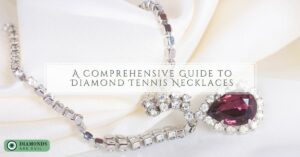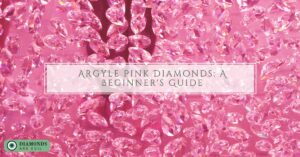In a world where jewelry is considered “natural or fake”, it is important to explain exactly what a laboratory diamond ring is and why it contains an original diamond, although its name might call into question the reliability of the stone.
A laboratory diamond ring is part of the technological breakthrough that the world of jewelry and luxury products has undergone in recent years in Israel and around the world – an innovative technique to create diamonds using environmental and ecological method, without the mining of natural resources. The laboratory conditions produce the exact same properties of the natural diamond and thus obtain a prestigious gemstone, shiny and magnificent at the exact finish level and no difference between it and the diamond that comes from the depths of the earth. This is a huge message for the public that buys diamond rings and can enjoy an attractive, prestigious and charismatic jewel at a much cheaper price. A laboratory diamond ring does not erode, crack or blacken and is identical to the natural product, so it can become a durable and personal item for many years. In fact, only a special and exclusive laboratory located in the Ramat Gan Diamond Exchange complex can identify the source of the diamond and determine whether it originates is from nature or from the laboratory.
Any ordinary jewelry store and even the most professional gemologists without the right equipment will not notice any difference. Thus, the diamond ring from the lab becomes an original piece of jewelry for anything and everything that can be purchased at a much more affordable price and even for the first time to allow the vegan and ecological audience to enjoy a piece of jewelry that does no harm or environmental exploitation in any way.
Diamond rings are considered one of the world’s best-selling jewelry, especially in the trend of offering marriage. The marriage proposal is a one-of-a-kind, rare, romantic, powerful and exciting event and there is nothing better than the diamond with the heartwarming and magnificent appearance and eternal durability to express it. The diamond itself is a good and rare stone, with unique strength and strengths and therefore it is important that it be quality in every aspect.
You would not want to purchase an engagement ring that would later be found to be fake, cracked or unqualified. Therefore, it is important to purchase it only from a professional place where certified gemologists are responsible for the jewelry manufacturing and design process, including providing a gemological certificate and full responsibility if necessary.
How Much Does a Laboratory Diamond Ring Cost?
While the price of natural diamond rings can also reach tens of thousands of shekels, a laboratory diamond ring will usually be sold for only a few thousand shekels. The reason for the big difference in prices is that lab diamonds do not go through “the whole journey” from nature to the jewelry box and “settle” in a controlled crystallization process that saves significant costs.
Another advantage to the lab’s diamonds is the ability to produce them in larger sizes than those available in nature (1 carat vs. at most 0.5), so the jewelry itself is more powerful and prominent. At Green Diamonds, we specialize in the production of laboratory diamond rings in a variety of types and configurations, presented in a prestigious and exciting line for every purpose. Through us, you will be able to purchase top-quality diamonds with the highest level of warranty and gemological certificate to the diamond, which indicates that this diamond does indeed meet the stringent international standards.
This way you will know if the diamond you are purchasing is in good quality
For every diamond jewelry purchase (lab or natural), 4 important criteria should be checked:
Carat, Cut, Color and Clarity – briefly referred to as The 4 C’s.
Weight: Diamond weights as precious metal are measured in carats. 1 carat is equivalent to 0.2 grams. When the diamond is below 1 carat, it is expressed in “dots”. For example, a 0.5 carat diamond is referred to as a 50-point diamond or a half-carat diamond, a 0.3-diamond is referred to as 30 points and so on. The bigger the diamond, the more expensive it will be. The carat also expresses the purity of gold with 24 carat being the highest grade expressed by a metal containing 99.9% pure gold.
Therefor the higher the carat – it expresses both pure metal and more precious metal. This is one of the reasons why it is important to purchase the ring from a reliable and responsible place, which provides an accurate snapshot of the weight, cleanliness and color.
Cutting: The diamond cutting action actually makes the raw material the desired shape, rounding or sharpening the corners when it is then polished. This process is carried out sensitively and meticulously because it is the final part designed to give the final appearance and shape to the stone and determine its diameter. Accuracy, proportion and aesthetics are of great importance. Flat stone for example, will be less high quality than high stone and the highest quality is of a large and round diamond that polished all 57 of its wigs. In any case, the desire will be to remove the remaining defects and to exploit the raw material optimally.
Color: The diamond color should be as clean and transparent as possible, meaning colorless. The colorless stone is considered to be cleaner and more perfect and therefore very high quality and expensive. The diamonds obtained in nature appear in different shades of color such as white, yellow, pink, blue, brown, red and black. Red, pink, and blue diamonds are considered the “headlight color” group, when blue, red, and green are being considered extremely rare and therefore their price is higher than usual. The price is determined by the color of the diamond and the intensity of the color on the stone. Even if the stone is colored, the more transparent it gives it, the more expensive it is.
Diamond colors are ranked in order from the D grade considered to be the rarest and highest to N expressing a moderate color that exists in the diamond.
Cleanliness: Diamond cleanliness is a complete Torah in itself. Since every diamond stone has many inclusions such as cracks, imperfections or stains that appear completely natural on the rough diamond, the more imperfect and incomplete the diamond is – it is considered to be rarer and more valuable. Only a certified gemologist can determine the flaws that exist in each diamond and give it its cleanliness rating and it scores both external defects (usually removable by polishing and polishing) as well as internal defects.
Existing external defects: Scratches, stains (non-polished areas of the outer shell), heat marks (rapid polishing that causes slight heat marks on the shell), tendency (asymmetrical polishing), rough rounds (when the raw material is not smooth).
Existing internal defects: fracture (outside the fission lines), crack (inside the fission lines), Nate (another crystal found inside the diamond), beak (point), cloud (several points), drilling (bore hole created as a result of internal point cleaning).
The degree of cleanliness will then be determined by considering the number of defects, their location (as the defect approaches the center of the diamond so that its rating diminishes), its size, the degree of prominence of the defect and the color of the defect (the darker the defect I, the lower its rating).
The level of cleanliness begins with a FL rating (flawless) that expresses internal and external integrity. This rating indicates that there are no defects of 40x magnification, indicating the rarest and most beautiful diamond of all and therefore its price will be extremely high.
Continuing the rating is to IF level (without defects at lower magnification), VVS1 expressing ultra-tiny internal inclusion, VVS2 expressing tiny internal inclusion.
The VS1-VS2 diamond rating is considered to be of excellent quality, with invisible defects also increasing tenfold. These diamonds are less expensive and therefore, because of their high quality, are considered highly recommended for engagement rings.
Continuing the rating is for SI1-SI2 – levels that express diamonds with an internal inclusion that can be seen as 10x magnification and sometimes even without magnification, diamonds in I1 = P1, I2 = P2, I3 = P3 express an apparent flaw, mostly internal.
Other beautiful and recommended jewelry for men and women made from lab diamonds: diamond earrings, tennis bracelets and diamond necklaces.






